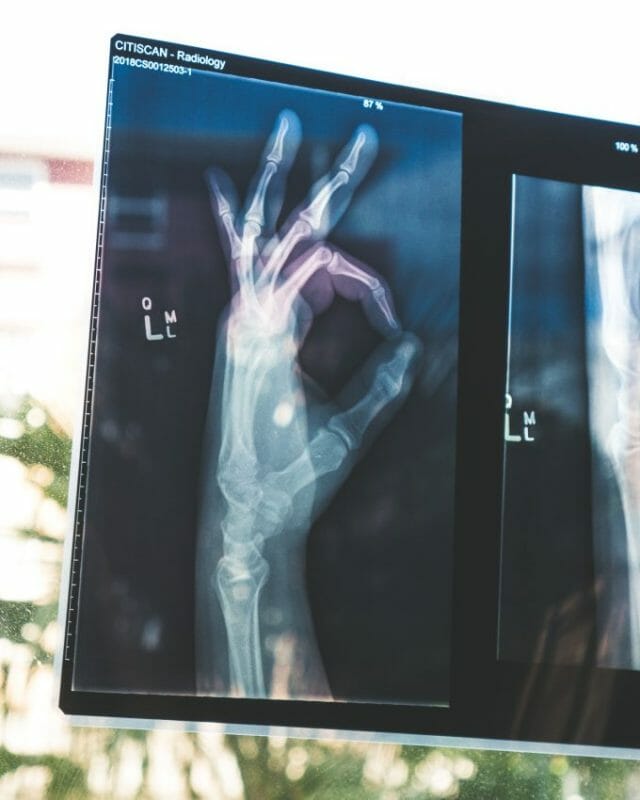At some point in your life, you’ve heard the word orthopaedic—it may have even been while trying to determine if it’s “orthopaedic” or “orthopedic.” The answer is both, so don’t worry yourself too much. We all know someone that could use the help of an orthopaedic doctor as musculoskeletal pain and conditions affect many people at any time and at any age. It can be so debilitating that it keeps them from getting out of bed, hindering their quality of life.
Luckily, orthopaedic doctors can help manage and treat bone and joint pain. Their treatment options can let you lead a better life without the weight of excruciating pain bringing you down.
But what exactly is an orthopaedic doctor, and what do they do?
Orthopaedics 101
According to Modern Orthopaedics of New Jersey, orthopaedics are doctors that specialize in the musculoskeletal system. What’s that? The musculoskeletal system is made up of bones, muscles, joints, tendons, and ligaments—all essential components when it comes to movement. These doctors are qualified to diagnose orthopaedic issues, perform/prescribe treatments and surgery, and assist with rehabilitation. They can also help you develop long-term strategies to keep your aches and pains in check.
There are more than 200 bones in the human body, so you’re bound to experience an issue or two in your lifetime (maybe even more). Anything from dislocated shoulders to lower back pain can use the attention of an orthopaedic doctor.
Because there are so many orthopaedic-related problems that you can experience, many doctors sub-specialize and focus on specific treatments. So, what you should look for in an orthopaedic doctor, and what treatment options will be available to you?
What Types of Conditions Do Orthopaedic Doctors Treat?
The conditions that orthopaedic doctors treat are vast and not limited to the following:
- Muscle strains
- Bone fractures
- Joint/back pain
- Arthritis
- Carpal tunnel
- Sprains
- Tendonitis
- ACL tears
- Limb abnormalities
- Bone cancer
When To See an Orthopaedic Doctor
The most common reason people see an orthopaedic doctor is because they’re experiencing severe pain in their joints, muscles, or bones. These telltale signs can help you determine when to see a doctor—if your range of motion is diminished; an orthopaedic doctor can help you move again.
Some signs to look out for include:
- Pain or swelling in the bone, joint, or muscle
- Decreased mobility and range of motion in a joint
- Numbness or tingling sensations
- Trouble performing daily tasks
Talk to your doctor as soon as possible if the pain is long-lasting and you can’t mend it with at-home care. Sometimes these issues can arise from old injuries and develop over time.
You may want to see an orthopaedic doctor for bone and soft-tissue issues relating to long-term illnesses, such as:
- Arthritis
- Bursitis
- Benign, sarcomas, or metastatic tumors around the bone
- Blood cancer
Types of Treatments
As we mentioned, orthopaedic doctors specialize in a wide variety of treatments.
Nonsurgical
- Exercise: There may be a specific set of exercises that your orthopaedic doctor recommends, such as stretching to maintain and improve your strength, flexibility, and range of motion in the affected area.
- Immobilization Techniques: Your doctor may tell you to avoid putting additional strain on the affected area. Some immobilization techniques include splints, casts, and braces.
- Medications: Some medications may help relieve pain and swelling. Over-the-counter medications like aspirin or ibuprofen can help take care of the discomfort. Prescription drugs like corticosteroids and anti-inflammatory medications may be suggested for your treatment.
- Lifestyle Change: In some cases, your orthopaedic doctor will recommend some lifestyle changes, like modifying your physical activity, diet, and exercise to prevent further aggravation and pain.
Surgical
If conditions aren’t improving, your doctor may recommend surgery as a last resort. Some examples of orthopaedic surgical operations include:
- Joint Replacement: This surgery includes replacing parts of the joint that are damaged or diseased—a common surgical procedure for individuals with arthritis.
- Fusion: The process of fusion includes using bone graft material and internal fixation techniques to connect two bones. As the bone tissue heals, it will fuse to the bone.
- Internal Fixation: This involves placing pins, screws, plates, or rods to help keep broken bones in place while they heal.
- Osteotomy: This type of surgery includes cutting part of the bone out and repositioning it. This procedure is often used to treat arthritis patients.
- Release Surgery: This surgery is performed on patients with carpal tunnel syndrome and relieves symptoms by reducing pressure on the median nerve.
- Soft Tissue Repair: Soft tissue repair can fix severely damaged muscles, tendons, and ligaments.
Talk to your primary care doctor if you feel that orthopaedic treatment may benefit you; they can recommend or refer you to a doctor in your area. You can also search online or ask a friend/family member for recommendations. Remember, these specialists are here to help. Contact an orthopaedic doctor today.
